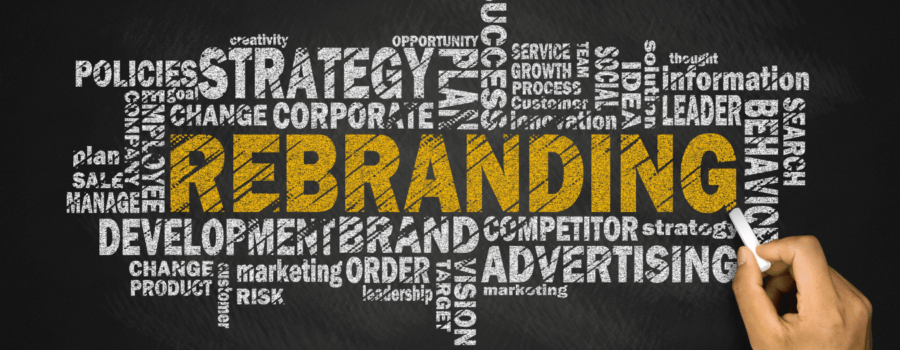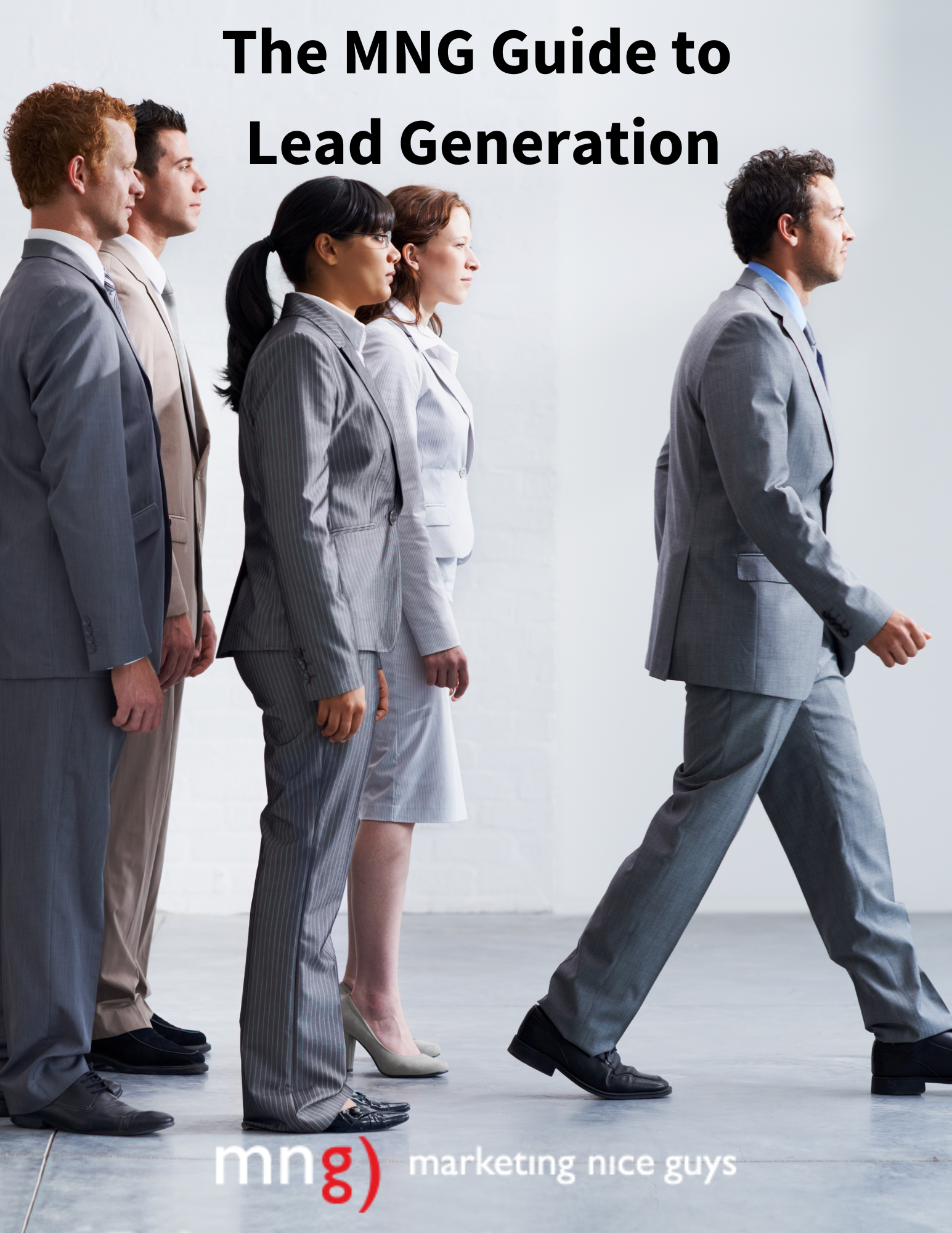In earlier blogs, we’ve written about the 6 Elements of a Strong Small Business Brand. But we haven’t really touched on the process of rebranding/repositioning, which you’ll certainly want to consider the longer your company has been in the marketplace.
Of course, for small businesses in particular that don’t have a lot of resources at hand, it’s one thing to know you need to rebrand, but another thing entirely to actually move forward. Oftentimes, the big push for change for many small companies comes with that realization that even loyal customers are grumbling about how old or dated a company’s look is. And because it doesn’t happen often or because it’s never been done by a small company before, many businesses don’t understand the first thing about how to even approach any repositioning. At Marketing Nice Guys, we’ve put together a few pointers that we hope can steer you in the right direction.
1. With any rebranding, know why you want to do it.
In other words, what’s the rationale behind the rebrand in the first place? Many companies start because they don’t like their older logo, but it’s typically broader than that. Ask yourself the following questions. Do you want to…
-
- Update your look and feel, including the logo? This is often the primary rationale but not the only one.
- Stand out from the competition? In many cases, brands in the same industry evolve to become more like each other and there is a need to distinguish yourself and the way you project who you are.
- Expand the brand to be more attractive to a new target demographic? For example, many companies want to target a younger or more diverse demographic because they want to build in audiences for the future.
- Change your mission or values? It might be that you see an opportunity to project new values to the marketplace.
- Change as the result of a buyout or merger? For some small businesses, this might mean merging two existing brands together into one.
- Change as the result of a negative event or issue? Some businesses may have had an adverse event that happened to them under an old brand name and they want to start fresh under a new name and approach.
2. Think about the scope of rebranding changes you want to make.
First off, are you keeping the name? Are you considering a new one? If it’s the latter, the process of choosing a new name is never easy. We do recommend forming a committee though certainly the naming-by-committee approach has its own challenges as well. Here are a few questions to consider as you think about the scope of the project:
-
- How much of the old brand do you want to keep? Is it a full break from the past or only a slight revision? Especially with distinctive logos, many companies want to keep certain elements, colors, or even a font they liked. Keeping those elements helps smooth the transition to something new while having a nice reminder of the past.
- Are you creating a new brand based on the acronym for what people actually call you versus what your official name is? For example, the Minnesota Manufacturing & Mining Company became 3M. Or, American Telephone & Telegraph became AT&T. (Maybe like KFC, you don’t want customers associating you with “fried” in the Kentucky Fried Chicken too.)
3. Don’t forget your (new) audiences and how your company meets their challenges
We often say all good marketing has an audience-first focus. And for a rebrand, it’s no different. As we stated earlier, many rebrands happen because of the need to attract a new or different audience than what you currently have as a small business. What’s important here is to focus on the needs and challenges of that audience, which are often different from existing customers.
Why do you need to focus on this? Because from a design perspective, such elements should inspire how you project the brand to those individuals and also help you update your brand so it has a compelling (and usually modern) look and feel. Understanding many small businesses are constrained by budget, there are certainly things you “should do” as you think about the customer research:
-
- Talk to these new customers. You can do face-to-face Zoom interviews, focus groups, or even phone calls to help you get more information.
- Create surveys and gather data from analytics or other data tracking you have about behavior, as well as topic areas. Data on topic areas, interests, and key pain points and challenges can be incorporated into a new brand look.
- Create personas around your various audience types. Before you do any design, this can help a designer or agency better frame how to project your brand. If you don’t have the bandwidth internally for this, an agency like ours can certainly help you with this.
4. Create a brand committee and draw from different parts of the company.
It’s dangerous to rebrand in a vacuum because, when you’re done, you’ll need buy-in from likely all parts of your organization. This is the case even at a smaller company. After all, don’t you want your salesperson loving the new brand so he or she can enthusiastically sell your products and services? Selecting the right people to be on your brand committee is certainly a big step in the process as this group will act as the set of individuals providing all the initial feedback on any new designs, and steering the internal design team or agency you use in a particular direction. They will also need to be in aligned in terms of any new name as well. At Marketing Nice Guys, we know companies all do this differently, but we’d make sure to have on a few different individuals, including:
-
- The CEO owner (if he or she has time), as this is a major initiative and he or she MUST buy in.
- The design team
- Marketing/communications
- Sales
Without key individuals, brand committees can get mired in any number of issues. The worst thing in the world, for example, is for the brand committee to show a set of final designs to the CEO and he or she absolutely hates them. Keep key individuals abreast of the progress so they can give feedback along the way.
5. Get started and begin the design and style-guide process.
Now comes the time to design the options. Whether you do this internally or hire an agency to help you, it’s important for the design team to use the information that’s been gathered by you upfront already: the rationale, the scope, and the audience data. In the ideal world, a design team will:
-
- Create a few sample directions for a new design, starting with the obvious and most identifiable aspect of the brand, the logo. Typically, these initial “directions” will be quite different but ones in which the branding committee can give feedback.
- Incorporate a narrative they want the design / logo to tell. A good design will have a “story” behind it (e.g., what does color stand for? What does the arrow mean? What does a particular symbol or icon represent?
- Develop an ongoing feedback loop with both the brand committee and the CEO/owner if that individual isn’t on the committee.
- Assemble an outside focus group of external users (perhaps current or potential future audience members) to gauge the new concepts.
Once the designs are finalized and approved by the committee, then comes the style guide. Many small businesses skip this step and they shouldn’t. The style guide is actually one of the core foundations of any brand as it should:
-
- Establish the official logos in varying sizes available for use (especially transparent ones for use with a white or black background).
- Restrict the use of brand colors. Many companies only use colors that are part of the official palette.
- Define the typography (fonts etc.) that can be used.
- Define rules around the use of photography with the brand.
- Define any standards around other visuals (graphics, video, illustrations, icons use)
- Define the words that describe the brand.
In the end, the style guide is what applies rigor to the brand implementation. Without, you can end up with a mishmash of many things that can dilute your brand equity.
6. Sell the new brand first to employees.
Though this is true of larger companies, it applies to smaller companies too. Even if your owner and brand committee members love the new rebrand, your employees have to like it too. They’re the ones who have to use the brand every day and market / sell it to customers. One thing you can do: Create an internal campaign a few weeks before you pitch it to your customers.
-
- Throw a little party or unveiling to celebrate the occasion. Have the creative team explain the rationale behind the new brand so the employees can also knowledgably speak about it.
- Spend some money on t-shirts, mugs, key chains, or other things that you can tangibly put the brand in the employees’ hands.
- Provide them the style guide and other areas where they can go to learn more.
7. Do the transition / implement the new brand.
This is where it can get pretty complex. Companies project their brand everywhere they do business. And all those smaller “touches” have to be changed over to a new look and feel or with a new logo. Even large companies can take years to do this because they don’t have the manpower to revert everything overnight. The other piece to keep in mind is that there are public-facing areas and private-facing ones. Many companies will prioritize the public-facing areas first, before doing the internal ones, but how you do this is up to you. If you think about it, the list is huge on public-facing alone, as it includes your website (logos, name, favicon), email addresses and signatures, SEO you have to do in the case of a name change or brand adjustment, marketing collateral / promotional materials, invoices, business cards, social media, swag, hashtags, directories, paid media, media kits etc. Internally, you have to change the branding assets, style guides, employee pay stubs and checks, letterhead and other areas that carry the brand.
8. It’s time for launch. Make a splash.
There’s no point in doing all the work to develop a new brand and then keep it relatively quiet. From a marketing standpoint, it’s a great excuse to hold an event. You had a party for internal employees, now you can have one inviting customers, and/or provide a sneak peak of the brand to a select few. As a small business, why not also invite the local media, your partners, affiliates, contractors, or others associated with your company! Like any new marketing campaign, you’ll also want to:
-
- Create a press release. Most can be done and distributed for under $300 if you do it yourself.
- Develop promotional assets for every marketing channel you have, especially the website, social media, video, email and other key areas.
- Use your employees to spread the word about your new brand story, so they can help the company gain attention as well.
Conclusion: Do you do it yourself or hire an agency?
It’s certainly not unheard of for small companies to do a rebrand themselves, although it’s much rarer these days, simply due to the specialization of expertise involved in rebranding projects. Even small organizations on a budget will often turn to an agency for help because they often don’t have the skills or the resources to do such a project efficiently. One thing to consider: If you need to save money, agencies can be brought in just for the design phase only. But make sure you arm them with the right information on rationale, audience, and scope. At Marketing Nice Guys, feel free to contact us for a free consultation if you have questions about a rebranding or need help implementing any new brand on your various digital channels. We wish you success in all your marketing endeavors.






